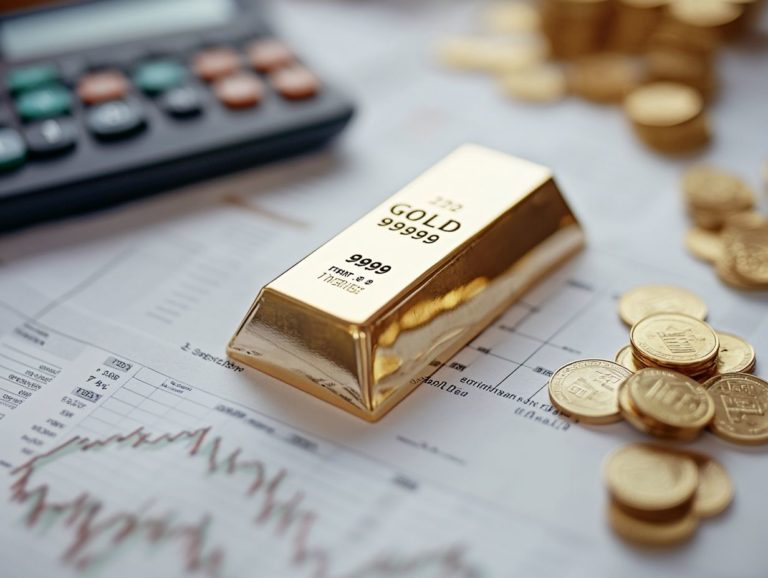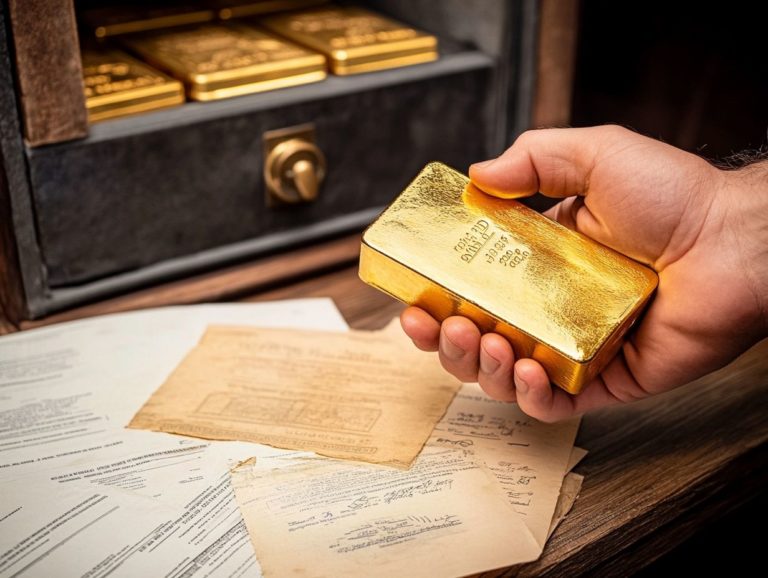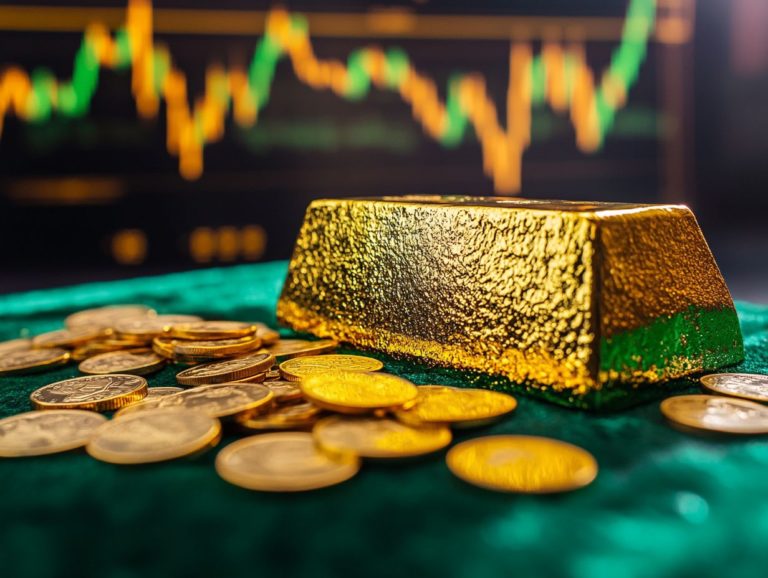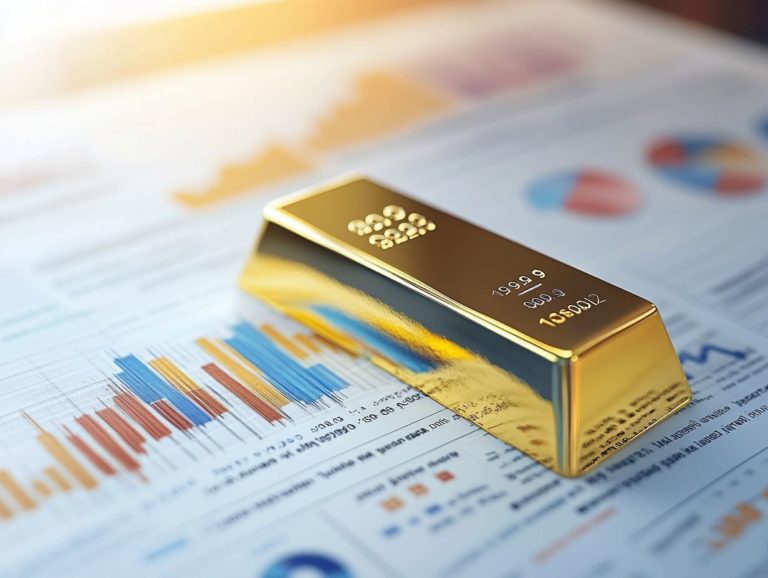Gold Investment Strategies for High Inflation
As high inflation continues to ripple through economies globally, grasping its impact on your investments becomes essential for successfully navigating these turbulent financial waters.
This article delves into what high inflation truly means and how it shapes investment strategies, with a particular focus on the benefits of investing in gold.
Gold serves not only as a hedge against rising prices but also stands out as a safe haven asset, offering unique qualities that can safeguard your portfolio.
You ll explore various avenues for investing in gold, key factors to consider, and strategies to optimize your investment during inflationary times.
Dive in to arm yourself with the knowledge necessary for making well-informed investment decisions!
Contents
- Key Takeaways:
- Understanding High Inflation and its Impact on Investments
- Benefits of Investing in Gold during High Inflation
- Different Ways to Invest in Gold
- Factors to Consider when Investing in Gold during High Inflation
- Frequently Asked Questions
- What are gold investment strategies for high inflation?
- Is gold a good investment during times of high inflation?
- What are the benefits of investing in gold during high inflation?
- What are the risks of investing in gold during high inflation?
- How much of my investment portfolio should I allocate to gold during high inflation?
- What are some other ways to invest in gold during high inflation?
Key Takeaways:
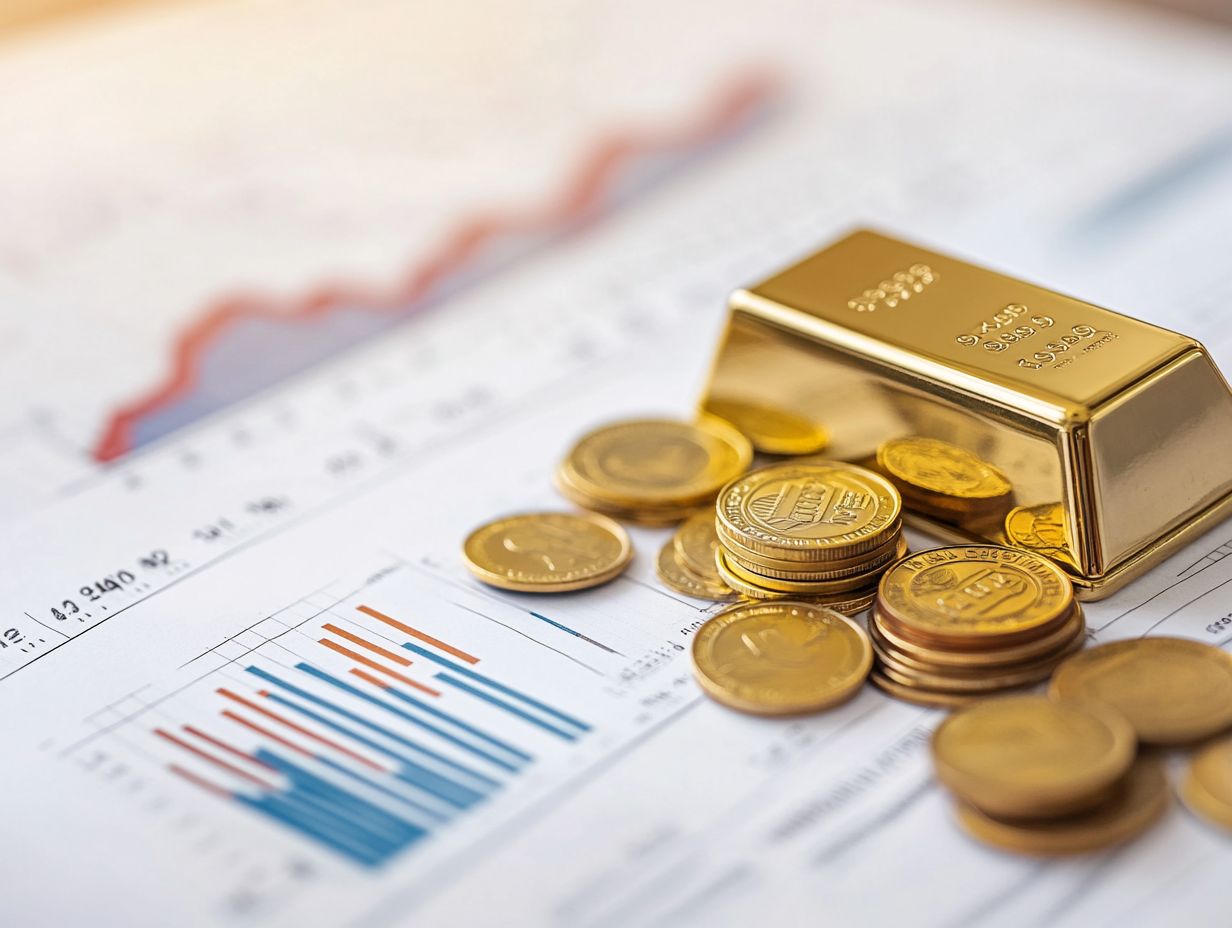
- Investing in gold can act as a hedge against high inflation, protecting the value of your assets.
- Gold is considered a safe haven asset during times of economic uncertainty and inflation.
- When investing in gold during high inflation, it’s important to consider timing, costs, and risk management strategies.
Understanding High Inflation and its Impact on Investments
High inflation stands as a formidable economic force that directly impacts the purchasing power of both consumers and investors. It is essential for you to grasp its implications on various assets and investment strategies.
During times of elevated inflation, the value of currency diminishes, resulting in rising prices for commodities and real estate. This scenario often drives investors like you to explore alternative options to protect your wealth, such as gold and other tangible assets.
Understanding how inflation rates and interest rates interact helps you make informed decisions in the midst of volatile markets.
What is High Inflation?
High inflation signifies a persistent rise in the prices of goods and services within an economy, which notably influences the purchasing power of your currency. This economic event is typically gauged using the consumer price index (CPI), a tool that tracks the price changes of a basket of consumer goods over time.
When inflation escalates sharply, it can chip away at your savings and diminish your spending power, ultimately impacting economic growth. Understanding what causes inflation is crucial for your financial health!
Inflation can arise from various factors such as demand-pull effects (when demand exceeds supply), cost-push elements (when production costs rise), or even built-in inflation, where businesses transfer increased costs onto consumers.
Inflation manifests in different forms, including moderate inflation, galloping inflation (when inflation is very high but not hyper), and hyperinflation (when inflation soars out of control), each presenting unique challenges. Policymakers closely examine these trends to devise strategies that stabilize prices and shield the economy from erratic fluctuations.
How Does it Affect Investments?
High inflation strongly affects your investments, often eroding the purchasing power of your returns and necessitating a shift in your investment strategies. As inflation rates climb, the real returns on your investments may dwindle, prompting you to reassess your portfolio to preserve your wealth.
Rising costs can profoundly impact various asset classes, including stocks, real estate, and commodities. For instance, during periods of high inflation, equities might initially enjoy a boost as companies pass increased costs onto consumers. However, over the long haul, sustained inflation can erode profitability.
Real estate often serves as an effective hedge against inflation, attracting those of you seeking tangible assets. Yet, it s essential to recognize that rising interest rates can dampen its overall appeal. On the flip side, commodities tend to flourish in inflationary climates, capturing your interest for their potential to preserve value.
As inflation shapes your investment landscape, the importance of diversification rises dramatically. This strategy allows you to mitigate risks and seize growth opportunities across various asset classes, ensuring a more resilient financial future.
Benefits of Investing in Gold during High Inflation
Investing in gold during times of high inflation offers a range of compelling advantages for you as an investor seeking a dependable safeguard against rising prices and currency devaluation.
Historically, gold has been regarded as a safe-haven asset, preserving its value even when inflation diminishes the purchasing power of fiat currencies. This makes it a stable alternative to traditional investments like stocks and bonds.
With gold, you can navigate economic uncertainties with greater confidence.
Protection Against Inflation
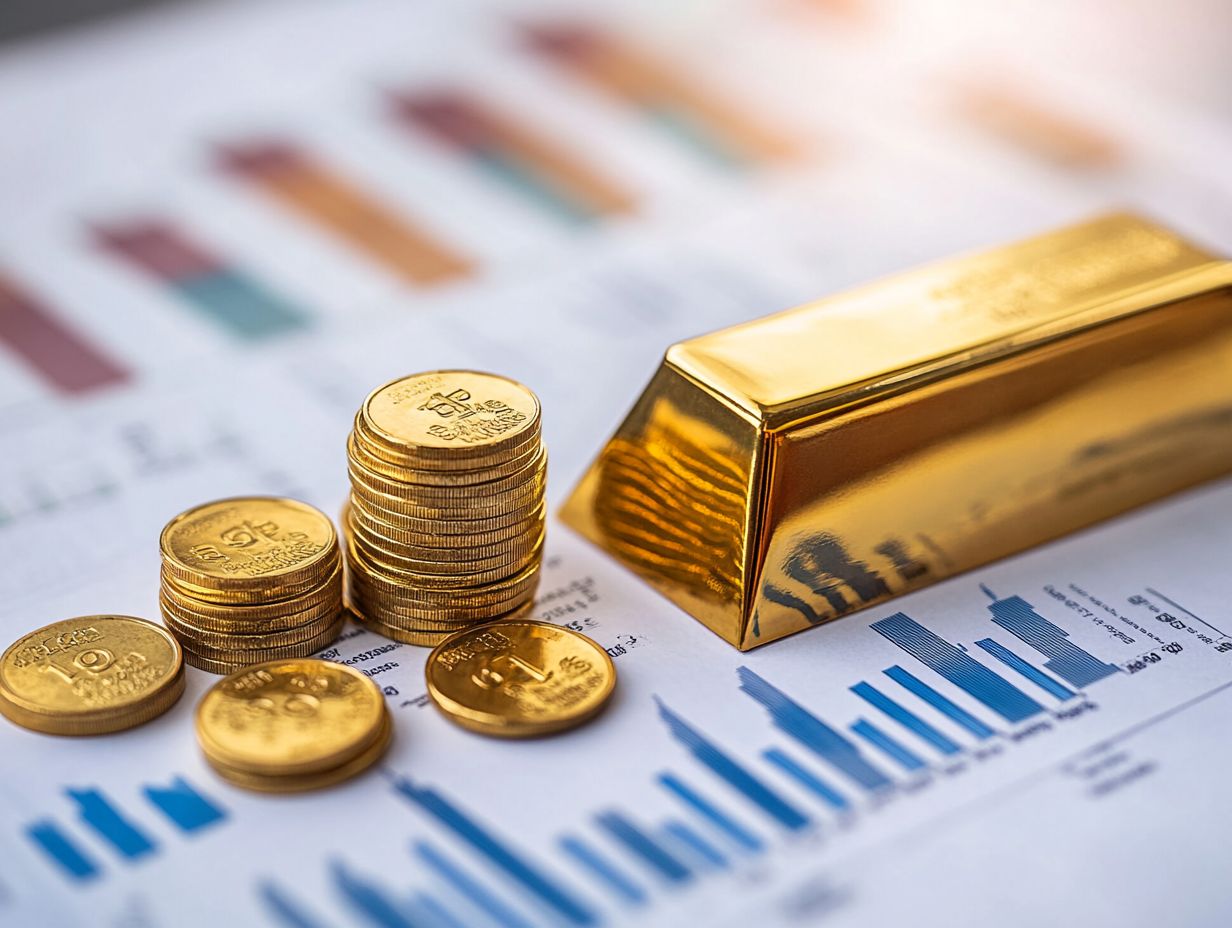
Investors often see gold as a strong protection against inflation, and for good reason.
When the purchasing power of currency takes a hit, you ll likely notice that gold s value tends to rise. Many investors turn to gold as a protective measure for their assets during unsettling times of economic uncertainty and climbing inflation rates.
Looking back, you can see that gold experienced impressive increases in value during inflationary periods like the dramatic price surges of the 1970s.
This is often viewed as a natural counter to the diminishing effects of inflation on fiat currencies.
When central banks react to rising prices by ramping up the money supply, the finite nature of gold becomes even more appealing. This leads to a surge in its prices as demand grows.
For example, during the 2008 financial crisis, as measures to stimulate the economy sparked fears of inflation, gold soared to record heights.
This inverse relationship between gold prices and inflation solidifies gold s reputation as a stable asset and underscores its historical reliability during turbulent economic times.
Safe Haven Asset
You often hear gold referred to as a safe-haven asset, drawing in investors during times of market turbulence and economic distress.
Its intrinsic value and limited supply make it an appealing choice for those like you who seek to preserve wealth in uncertain times.
This precious metal has shown remarkable resilience throughout history. It frequently maintains or even increases its value during economic downturns, geopolitical tensions, or financial crises.
Unlike currencies or stock markets, which can be swayed by inflation and market sentiment, gold holds a unique charm as a tangible asset.
Gold transcends geographical boundaries and the passage of time.
In contrast to many other investment avenues, gold doesn t hinge on central bank policies (rules set by a country’s central bank about currency) or corporate earnings (profits made by companies).
This makes it a stable refuge for you, the risk-averse investor, who prioritizes asset preservation over speculative ventures.
Different Ways to Invest in Gold
Excited about investing in gold? You have a myriad of options!
Each option presents distinct benefits and considerations.
Whether you’re drawn to the tangible allure of physical gold, such as coins and bullion, or prefer the flexibility of gold exchange-traded funds (ETFs) and mining stocks, you can choose investment avenues that resonate with your financial objectives and risk appetite.
Physical Gold
Investing in physical gold means acquiring tangible assets like gold coins and bullion.
This approach resonates with those who prefer to hold their wealth in a physical form rather than relying on financial instruments.
It offers a sense of security and control over your assets, manifesting in recognizable forms that have retained value throughout history.
However, it’s crucial to weigh the challenges that accompany this investment strategy, particularly regarding security and storage.
Gold, while undeniably valuable, demands appropriate safeguarding to prevent theft or loss. This may incur additional costs for secure vault services or insurance.
Although physical gold serves as a solid hedge against inflation, its liquidity isn’t as straightforward as liquidating stocks or bonds.
Understanding the different forms bars, coins, or jewelry will be essential as you craft your investment strategy in this precious metal.
Gold ETFs
Gold exchange-traded funds (ETFs) offer a simple way to gain exposure to gold prices without the hassle of holding the physical asset. These investments track gold performance, providing you with liquidity and ease of trading on exchanges.
This structure allows you to invest in gold effortlessly, avoiding the common challenges of storage and insurance associated with physical bullion. When you buy shares in a gold ETF, you indirectly own a fraction of the underlying gold assets, typically stored in vaults.
The primary benefits include easy access to the gold market, lower transaction costs compared to direct purchases of physical gold, and the potential for price appreciation. However, be aware of potential downsides, such as management fees, since gold ETFs do not grant ownership of physical gold. This is important to consider if you value tangible assets during economic uncertainty.
When selecting a gold ETF, evaluate the fund s liquidity, expenses, and performance history to ensure it aligns with your investment goals.
Gold Mining Stocks
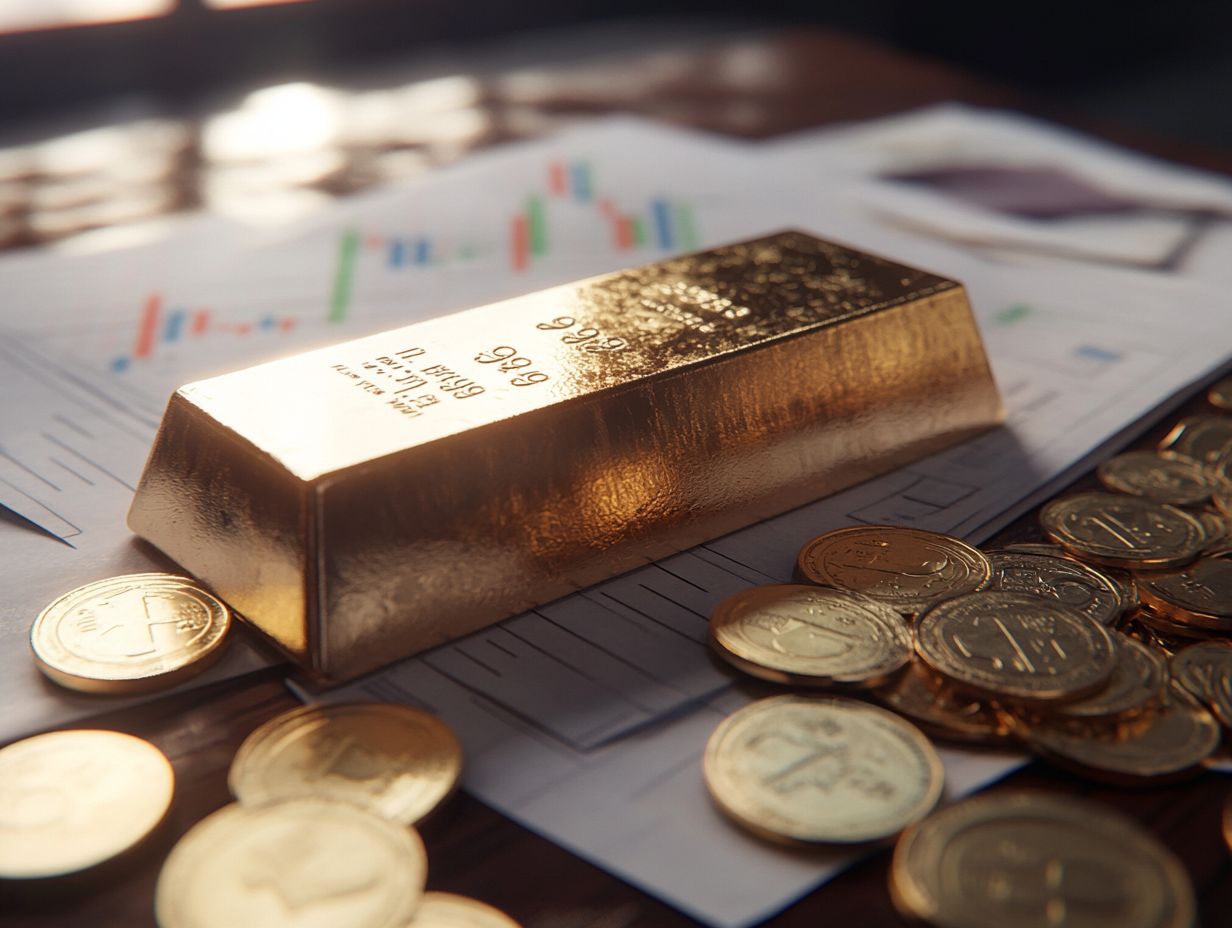
Investing in gold mining stocks presents an exciting opportunity to gain exposure to the gold market. These stocks are closely tied to companies involved in gold exploration and production, offering you leveraged returns correlated with gold prices.
However, the landscape is complex. You ll navigate dynamics that can impact a mining company’s efficiency, such as labor costs, geopolitical factors, and environmental regulations.
Gold price fluctuations are pivotal; when prices soar, mining companies enjoy substantial gains. Conversely, when prices fall, profitability can drop significantly. Understanding these factors is vital for anyone considering this investment, enabling you to weigh potential rewards against the risks in the volatile nature of the gold market and mining industry.
Factors to Consider when Investing in Gold during High Inflation
When investing in gold during high inflation, take several key factors into account to maximize your outcomes.
Consider the importance of timing the market, understanding the costs and fees associated with different gold investment options, and adopting strong risk management strategies to protect against price shocks.
By navigating these elements carefully, you can position yourself for greater financial success!
Timing
Timing is crucial in investing. Market volatility can greatly influence gold prices, directly affecting your investment returns. Analyze market conditions to identify the best moments for entering or exiting your gold investments.
Understanding the cyclical nature of the gold market is important. Economic indicators like inflation rates, interest levels, and geopolitical tensions can cause price fluctuations. Analyzing market patterns using charts can help you uncover historical trends that indicate optimal trading periods.
Keep a close watch on the strength of the U.S. dollar, which often moves inversely to gold, for valuable insights.
Stay informed about trends, monitor financial news, and utilize market analytics tools to make more calculated decisions, enhancing the potential for favorable outcomes in your gold investments!
Costs and Fees
When you re investing in gold, grasping the associated costs and fees is crucial. This ensures your investment returns remain intact. Different avenues, such as physical gold and gold ETFs, carry varying expenses related to storage, management, and transaction fees.
Mining stocks offer another investment opportunity, but they come with their own set of costs. These include brokerage fees and potential market volatility. Understanding these expenses is essential, as they can erode the overall performance of your gold investments.
For example, while physical gold incurs storage fees and insurance costs, gold ETFs generally have management fees that could chip away at your net returns over time. Be sure to consider any exit fees or capital gains taxes that might come into play, as these can significantly influence the profitability of your gold investment decisions.
Take charge of your investment strategy today! Analyze your costs to maximize your potential returns.
Risk Management
Effective risk management is crucial for investors navigating the gold market amid high inflation and market volatility. By employing strategies like portfolio diversification and setting clear investment objectives, you can mitigate risks tied to price fluctuations.
Maintaining a well-rounded portfolio can serve as a significant buffer against unexpected downturns. Diversification may involve allocating your funds across various assets, such as equities, bonds, and alternative investments, alongside gold.
A well-structured investment plan will help you identify key entry and exit points, ensuring you remain unaffected by market hysteria. Incorporating stop-loss orders can further protect you from drastic declines in gold prices, promoting a balanced approach to your investments.
Ultimately, understanding market trends and making informed decisions will lead you to a more resilient investment strategy.
Frequently Asked Questions
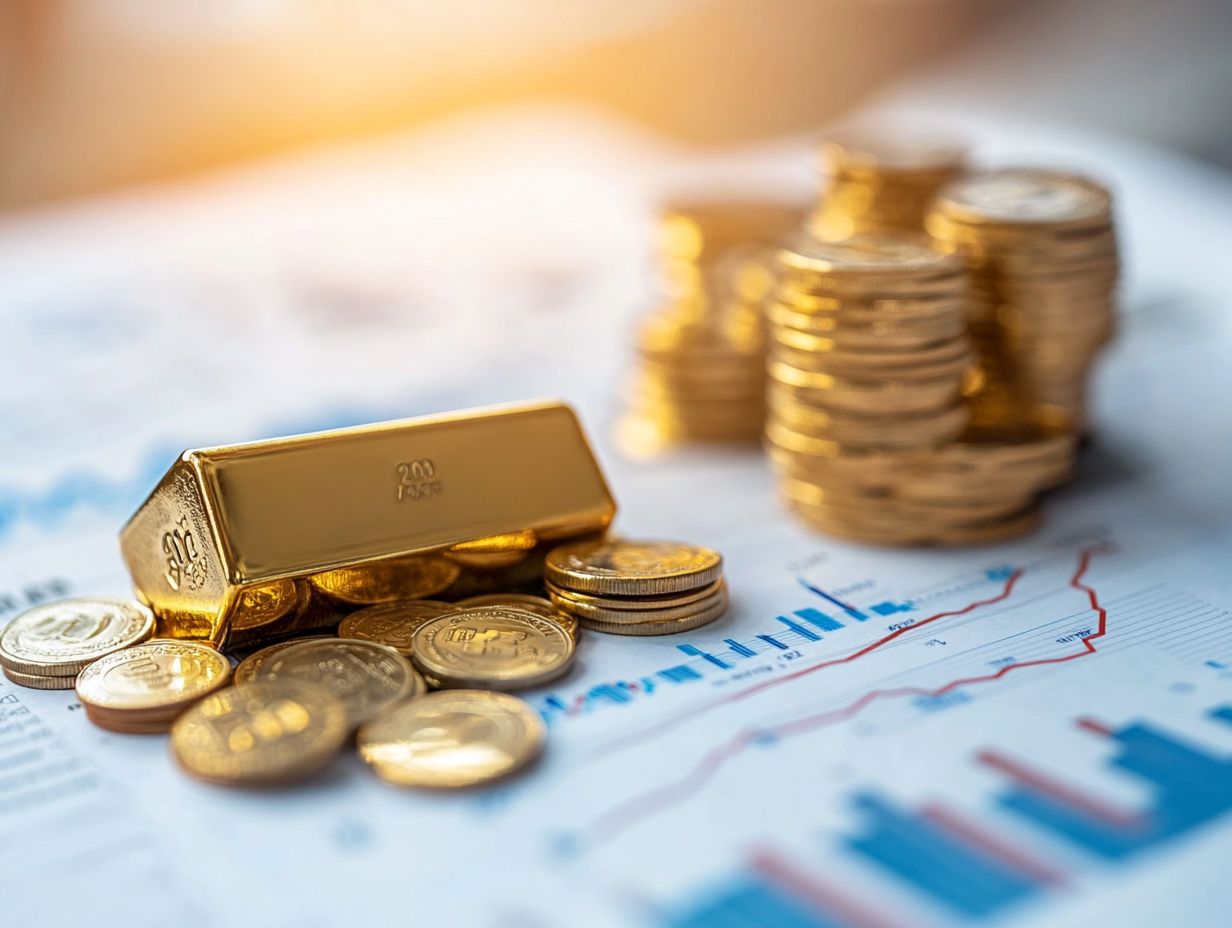
What are gold investment strategies for high inflation?
Gold investment strategies for high inflation involve investing in gold as a hedge against inflation. These strategies typically include purchasing physical gold, investing in gold exchange-traded funds (ETFs), or buying shares in gold mining companies.
Is gold a good investment during times of high inflation?
Yes, gold is often seen as a safe haven during times of high inflation. Gold tends to hold its value and even increase in price during periods of high inflation, making it a valuable asset for investors.
What are the benefits of investing in gold during high inflation?
Investing in gold during high inflation can provide several benefits, such as protection against the devaluation of currency, potential increases in gold prices, and diversification in your investment portfolio.
What are the risks of investing in gold during high inflation?
Investing in gold has risks, including price fluctuations, potential storage and insurance costs for physical gold, and the possibility of fraud in the gold market.
How much of my investment portfolio should I allocate to gold during high inflation?
The amount of gold you should include in your investment portfolio during high inflation will depend on your individual risk tolerance and investment goals. It’s recommended to consult with a financial advisor to determine the appropriate allocation for your specific situation.
What are some other ways to invest in gold during high inflation?
In addition to purchasing physical gold or investing in gold ETFs, other methods include buying gold futures contracts, investing in gold mining stocks, and purchasing shares in gold mutual funds.










